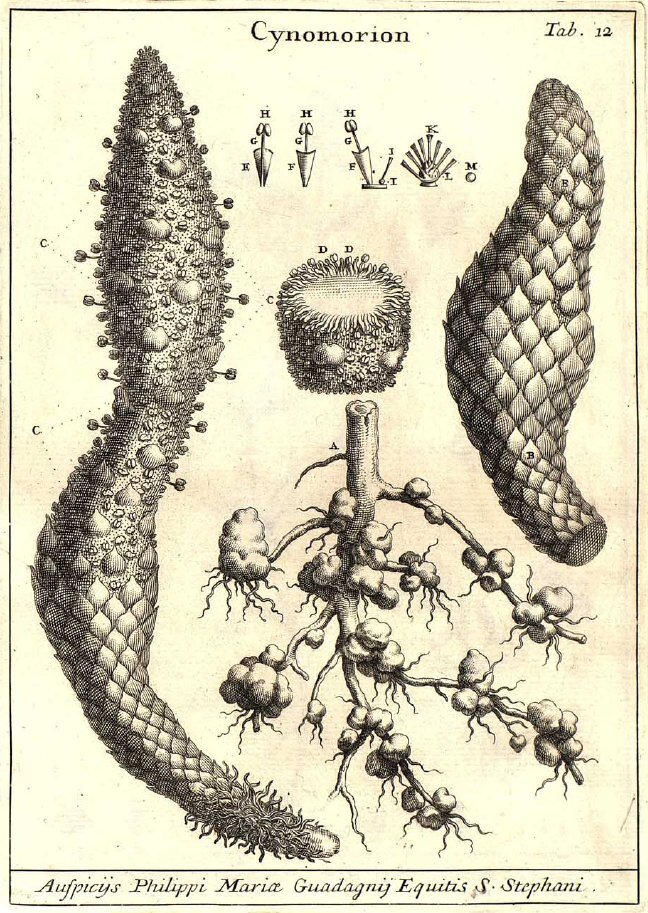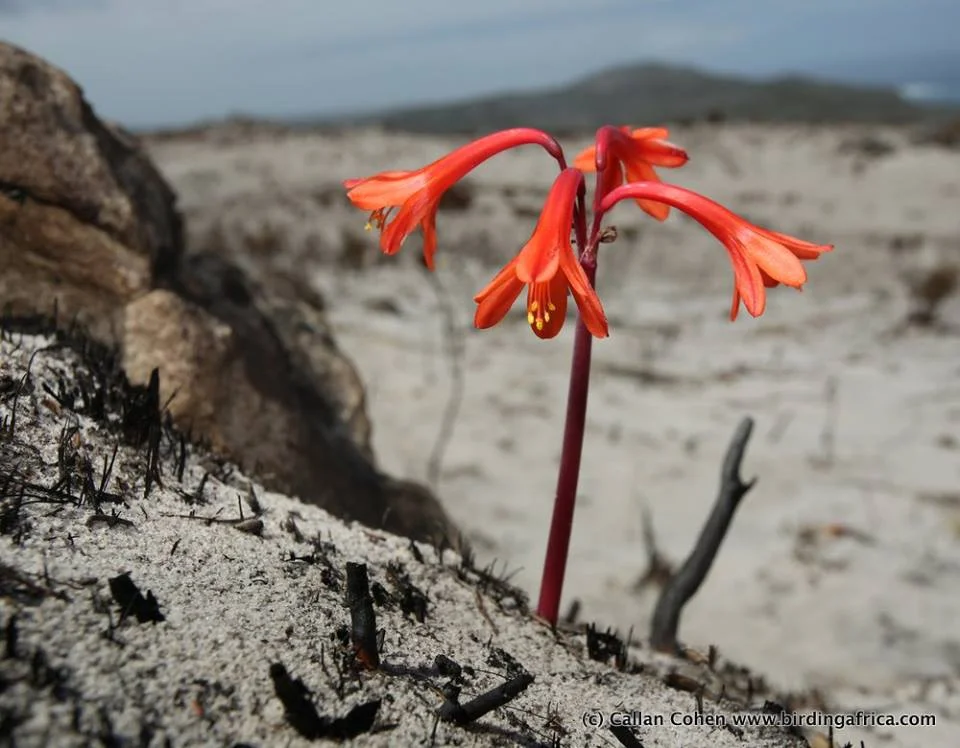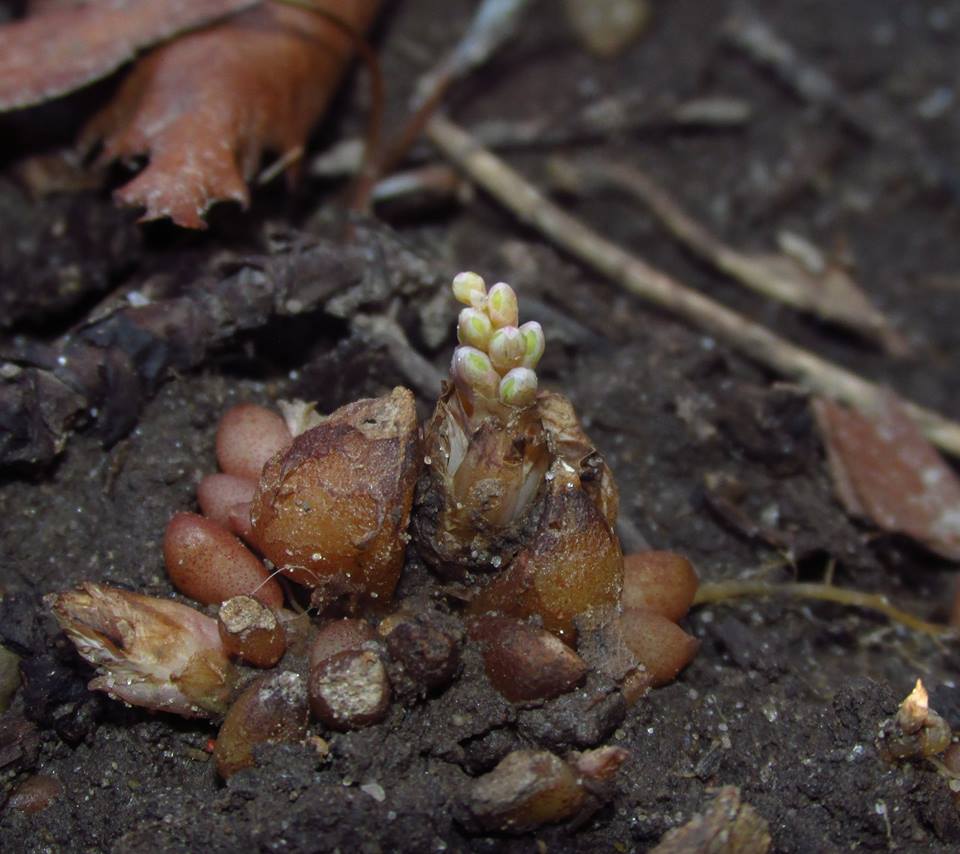Photo by Hans Hillewaert licensed under CC BY-ND 2.0.
Meet Cynomorium coccineum aka the Maltese mushroom. Despite the common name and overall appearance, this is not a fungus. It is indeed a plant. Cynomorium coccineum is a holoparasite. It produces no chlorophyl of its own and relies solely on a host plant for all of its water and nutrient needs. It is said to parasitize the roots of halophytes or salt-loving plants and thus, is most commonly found growing in salt marshes in addition to dry, sandy habitats in coastal areas.
Native to the Mediterranian region and extending into parts of Afghanistan, Saudi Arabia, Iran, and Central Asia, this species is really only ever found during the rainy season. Most of its life is spent underground, emerging only to display its flowers. Only when enough energy has been garnished from the host will this plant throw up these strange flower spikes. As you can tell from the picture, the spikes are jam packed with highly reduced flowers. The flowers give off a scent that has been likened to cabbage. It is thought that flies take up the bulk of the pollination of these blooms.
Photo by Alastair Rae licensed under CC BY-ND 2.0.
Photo by Hans Hillewaert licensed under CC BY-ND 2.0.
As you can probably guess by its strange appearance, the taxonomic affinity of this strange parasite has been the subject of much debate. For a long time, many botanists placed it in the family Balanophoraceae but more recent genetic work suggests it belongs in its own family, Cynomoriaceae. It is the only genus within that family but interestingly enough, Cynomoriaceae is located within the order Saxifragales, somewhere near Crassulaceae, making it a distant relative of stonecrops like sedum. No matter where its located on the tree of life, Cynomorium coccineum is surely one of the strangest plants on Earth.








